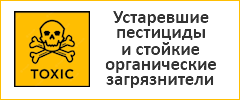Typhoid cases reported in south
OSH, 21 Feb 2006 (IRIN) — Almost half a dozen patients have been hospitalised in southern Kyrgyzstan with typhoid in a town near radioactive dump sites.“Eight local residents have been hospitalised over the past week in the Mailuu-Suu town in the southern province of Jalal-Abad and we have five confirmed cases, the rest are ordinary diarrhoea instances,” officials at a local sanitary and epidemiological surveillance centre said from Jalal-Abad on Monday. “All of them are residents of the upper area of Mailuu-Suu known as Koktash settlement,” they added.
With a population of some 25,000, Mailuu-Suu, 100 km northwest of the provincial capital Jalal-Abad, is known for its radioactive uranium dumps, a legacy of the Soviet Union’s uranium mining programme in the area.
Some 3,000 people live in Koktash and “every year it is the same scenario, we are afraid to drink water from the taps,” Abdilda, a middle-aged Koktash resident, said.
Local doctors cite contaminated water as the source of infection. Paramedics in the area are currently busy looking for other residents who had been in contact with those already diagnosed with the disease. Their number is some 260, according to local doctors.
“Generally typhoid cases surface during hot summer months, but in this case it happened right in the middle of winter,” town mayor Bumayram Mamaseitova said. “There is a constant and acute lack of clean drinking water in Koktash. We had been supplying drinking water to residents there by trucks both in summer and autumn. However, our local budget cannot carry that burden any more, while the local population does not want to pay for water,” she explained.
But local residents say that they cannot afford to pay for the much needed water. In an effort to secure funds to deal with the problem, the town authorities went to the provincial governorate, but it could not help them due to a lack of resources in the poor former Soviet republic, where some 40 percent of the population lives below the national poverty line, according to the World Bank.
“The main issue is the reconstruction of the town’s water supply and sewage networks, which were installed some 60 years ago. The networks have become antiquated and run down since then,” local experts explained, adding that frequent leakages in the system were the source of water contamination.
However, some local scientists claimed that the radioactive waste dumps nearby were involved. “Radioactive waste might be leaking into the local river and it could well cause mutation amongst micro-organisms in the water sources, which can cause outbreaks of infection,” Rakhman Toichiev, head of the institute on health issues at the Kyrgyz academy of sciences, told IRIN.





